Asana Pranayama Mudra Bandha
₹600.00
| AUTHOR: | SWAMI SATYANANDA SARASWATI |
| PUBLISHER: | YOGA PUBLICATIONS TRUST |
| LANGUAGE: | ENGLISH |
| EDITION: | 2013 |
| ISBN: | 9788186336144 |
| PAGES: | 565 |
In stock
Asana Pranayama Mudra Bandha is recognized internationally as one of the most systematic yoga manuals available today. Since its first publication by the Bihar School of Yoga in 1969, it has been reprinted thirteen times and translated into many languages. It is the main reference text used by yoga teachers and students of Bihar Yoga/Satyananda Yoga within the international Yoga Fellowship Movement, and many other traditions as well.
This comprehensive text provides clear illustrations, step by step directions and details of chakra awareness. It guides the practitioner or teacher from the simplest to the most advanced practices of the hatha yoga system. A therapeutic index is included for use by doctors and yoga therapists incorporating recent information from research into yoga. This edition successfully brings the exposition of yoga practices to the standard of a university text.
About the Author
Swami Satyananda was born at Almora, Uttar Pradesh, in 1923. In 1943 he met Swami Sivananda in Rishikesh and adopted the Dashnami sannyasa way of line. In 1995 he left his guru’s ashram to live as a wandering mendicant and later founded the international yoga fellowship in 1963 and the Bihar school of yoga in 1964. Over the next 20 years Swami Satyananda toured internationally and authored over 80 books. In 1987 he founded Sivananda Math, a charitable institution for aiding rural development, and the Yoga Research Foundation. In 1988 he renounced his mission, adopting kshetra sannyasa, and now lives as a paramahamsa sannyasin.
The first edition of Asana Pranayama Mudra Bandha
published in 1969, was derived from the direct teaching of Swami Satyananda Saraswati during the nine month Teachers Training Course conducted at Bihar School of Yoga, Munger, in 1969. The second edition was published in 1973 to commemorate his Golden Jubilee. At this time, the text was completely revised and new material was added from class notes taken during the 1970-71 Sannyasa Training Course, which was the last course that he personally conducted.
In response to popular demand and to meet the requirements of a university text, APMB was revised and updated under the direction and inspiration of Swami Niranjanananda Saraswati, the successor of Swami Satyananda Saraswati. This text is currently being used as the main practical text for the teaching of asana, pranayama, mudra, bandha and shatkarma around the world by yoga teachers from every tradition and path.
Since publication of the first edition, interest in yoga has spread widely. Now APMB is used in ashrams, centres and yoga schools in every country as the standard textbook for teachers and students alike. The techniques presented have been assimilated by fields as diverse as medicine, education, entertainment, business, sports and the training of spiritual aspirants.
The science of yoga applies itself to all aspects of life. This revised edition presents basic yogic practices including asanas, postures; pranayamas, breathing techniques; mudras, positions or gestures which represent the psyche; bandhas, locks for channeling energy; and shatkarmas, cleansing practices. All of these techniques purify the body, mind and energy systems to prepare the ground for higher practices of meditation and for the ultimate experience of cosmic consciousness. Also included is a section introducing the chakras, psychic centres, and other aspects of the subtle body.
The effects of yogic practices during and after performance are currently being researched by scientists and doctors around the world. Their results show that asanas, pranayamas, mudras and bandhas are a potent means to restore and maintain physical and mental health.
Asana Pranayama Mudra Bandha is designed for yoga students, spiritual seekers and for those studying yoga in depth. Although many health professionals consult this text as a guide when constructing programs to provide clients with physical, mental and emotional balance, these techniques are not primarily for the sick but for the healthy.
When learning the practices of yoga, the guidance of a competent teacher is recommended. People with specific health problems or who are undergoing a period when extra care is needed, such as pregnancy, need individual guidance, not techniques learned from a book, not even this book. This text provides yogic practices and information for personal evolution. When practiced faithfully, under the guidance of a competent teacher, these techniques will expand your consciousness.
Introduction to Yoga
Yoga is the science of right living and, as such, is intended to be incorporated in daily life. It works on all aspects of the person: the physical, vital, mental, emotional, psychic and spiritual. The word yoga means ‘unity’ or ‘oneness’ and is derived from the Sanskrit word yuj, which means ‘to join’. This unity or joining is descried in spiritual terms as the union of the individual consciousness with the universal consciousness. On a more practical level, yoga is a means of balancing and harmonizing the body, mind and emotions. This is done through the practice of asana, pranayama, mudra, bandha, shatkarma and meditation, and must be achieved before union can take place with the higher reality. The science of yoga begins to work on the outermost aspect of the personality, the physical body, which for most people is a practical and familiar starting point.
When imbalance is experienced at this level, the organs, muscles and nerves no longer function in harmony; rather they act in opposition to each other. For instance, the endocrine system might become irregular and the efficiency of the nervous system decrease to such an extent that a disease will manifest. Yoga aims at bringing the different bodily functions into perfect coordination so that they work for the good of the whole body. From the physical body, yoga moves on to the mental and emotional levels. Many people suffer from phobias and neuroses as a result of the stresses and interactions of everyday living. Yoga cannot provide a cure for life, but it does present a proven method for coping with it.
Swami Sivananda Saraswati of Rishikesh explained yoga as an integration and harmony between thought, feeling and deed, or integration between head, heart and hand”. Through the practices of yoga, awareness develops of the interrelation between the emotional, mental and physical levels, and how a disturbance in any one of these affects the others. Gradually, this awareness leads to an understanding of the more subtle areas of existence.
There are many branches of yoga raja, hatha, jnana, karma, bhakti, mantra, kundalini and laya, to name but a few, and many texts explain them in detail. Each individual needs to find those yogas most suited to his/her particular personality and need. In the last half of the twentieth century, hatha yoga had become the most well known and widely practiced of the systems. However, the concept of what constitutes yoga is broadening as more people take it up, and this knowledge is spreading. In the ancient texts, hatha yoga consists of the shatkarmas, cleansing practices, only. Today, however, hatha yoga commonly embraces the practices of asana, pranayama, mudra and bandha as well.
History of Yoga
The yoga we know today was developed as a part of the tantric civilization which existed in India and all parts of the world more than ten thousand years ago. In archaeological excavations made in the Indus Valley at Harappa and Mohenjodaro, now in modern Pakistan, many statues have been found depicting deities resembling Lord Shiva and Shakti (in the form of Parvati) performing various asanas and practicing meditation. These ruins were once the dwelling place of people who lived in the pre-vedic age before the Aryan civilization started to flourish in the Indus subcontinent. According to mythical tradition, Shiva is said to be the founder of yoga and Parvati, his first disciple.
Lord Shiva is considered to be the symbol or embodiment of supreme consciousness. Parvati represents supreme knowledge. Will and action, and is responsible for all creation. This force or energy is also known as kundalini Shakti, the cosmic force which lies dormant in all beings. Paravati is regarded as the mother of the whole universe. The individual soul is embodied and bound to the world of name and form, and also liberated from the bondage of the world and united with supreme consciousness through her grace. Out of love and compassion for her children, she imparted her secret knowledge of liberation in the form of tantra. The techniques of yoga have their source in tantra and the two cannot be separated, just as consciousness, Shiva, cannot be separated from energy, Shakti.
Tantra is a combination of two words, tanoti and trayati, which mean ‘expansion’ and ‘liberation’ respectively. Therefore, it is the science of expanding the consciousness and liberating the energy. Tantra is the way to attain freedom from the bondage of the world while still living inn it. The first step in tantra is to know the limitations and capacities of the body and mind. Next it prescribes techniques for the expansion of consciousness and the liberation of energy whereby individual limitations are transcended and a higher reality experienced.
In ancient times, yoga techniques
were kept secret and were never written down or exposed to public view. They were passed on from teacher or guru to disciple by word of mouth. In this way there was a clear understanding of their meaning and aim. Through personal experience, realized yogis and sages were able to guide sincere aspirants along the correct path, removing any confusion, misunderstanding and excessive intellectual contemplation.
The first books to refer to yoga were the ancient Tantras and later the Vedas, which were written about the time the Indus Valley culture was flourishing. Although they do not give specific practices, they allude to yoga symbolically. In fact, the verses of the Vedas were heard by the rishis, seers, in states of deep yogic meditation or Samadhi, and are regarded as revealed scriptures. It is, however, in the Upanishads that yoga begins to take a more definable shape. These scriptures collectively form Vedanta, the culmination of the Vedas, and are said to contain the essence of the Vedas.
Sage Patanjali’s treatise on raja yoga, the Yoga Sutras, codified the first definitive, unified and comprehensive system of yoga. Often called the eight-fold path, it is comprised of yama, self-restraints, niyama, self-observances, asana, pranayama, pratyahara, disassociation of consciousness from the outside environment, dharana, concentration, dhyana, meditation, and Samadhi, identification with pure consciousness.
In the 6th century BC, Buddha’s influence brought the ideals of meditation, ethics and morality to the fore and the preparatory practices of yoga were ignored. However, Indian thinkers soon realized the limitations of this view. The yogi Matsyendranath taught that before taking to the practices of meditation, the body and its elements need purifying. He founded the Nath cult and the yogic pose matsyendrasana was named after him. His chief disciple, Gorakhnath, wrote books on hatha yoga in the local dialect and in Hindi.
Indian tradition previously required that original texts be written in Sanskrit. In some cases they clothed their writings in symbolism so that only those qualified to receive a teaching would be able to understand it. One of the most outstanding authorities on hatha yoga, Swami Swatmarama, wrote the Hatha Yoga Pradipika, or ‘Light on Yoga’, in Sanskrit, collating all extant material on the subject. In doing so, he reduced the emphasis on yama and niyama, thereby eliminating a great obstacle experienced by many beginners. In the Hatha Yoga Pradipika, Swatmarama starts with the body and only later, when the mind has become stable and balanced, are the yamas and niyamas (self-control and self-discipline) introduced.
The Contingency of yoga today
Today, in the 21st century, a spiritual heritage is being reclaimed of which yoga is very much a part. While yoga’s central theme remains the highest goal of the spiritual path, yogic practices give direct and tangible benefits to everyone regardless of their spiritual aims. Physical and mental cleansing and strengthening is one of yoga’s most important achievements. What makes it so powerful and effective is the fact that it works on the holistic principles of harmony and unification. According to medical scientists, yoga therapy is successful because of the balance created in the nervous and endocrine systems which directly influences all the other systems and organs of the body.
For most people in the 20th century, yoga was simply a means of maintaining health and well-being in an increasingly stressful society. Asanas do remove the physical discomfort accumulated during a day at the office sitting in a chair, hunched over a desk. Relaxation techniques help to maximize the effectiveness of ever-diminishing time off. In an age of mobile phones, beepers and twenty-four hour shopping, yogic practices make great personal and even business sense.
In the 21st century, beyond the needs of individuals, the underlying principles of yoga provide a real tool to combat social malaise. At a time when the world seems to be at a loss, rejecting past values without being able to establish new ones, yoga provides a means for people to find their own way of connecting with their true selves. Through this connection with their real selves, it is possible for people to manifest harmony in the current age, and for compassion to emerge where hitherto there has been none.
In this respect, yoga is far from simply being physical exercises. It is an aid to establishing a new perception of what is real, what is necessary, and how to become established in a way of life which embraces both inner and outer realities. This way of life is an experience which cannot be understood intellectually and will only become living knowledge through practice and experience. However, the renaissance has begun.
| Preface | XI |
| Introduction to Yoga | 1 |
| Asana | |
| Introduction to Yogasana | 9 |
| Beginners Group | 19 |
| Pawanmuktasana Series | 21 |
| Part 1: Anti-rheumatic Group | 23 |
| Part 2: Digestive/ Abdominal Group | 45 |
| Part 3: Shakti Bandha Asanas | 60 |
| Yoga Exercises for the Eyes | 74 |
| Relaxation Asanas | 85 |
| Meditation Asanas | 93 |
| Vajrasana Group of Asanas | 108 |
| Standing Asanas | 135 |
| Surya Namaskara | 159 |
| Chandra Namaskara | 173 |
| Intermediate Group | 179 |
| Padmasana Group of Asanas | 181 |
| Backward Bending Asanas | 194 |
| Forward Bending Asanas | 227 |
| Spinal Twisting Asanas | 250 |
| Inverted Asanas | 258 |
| Balancing Asanas | 290 |
| Advanced Group | 223 |
| Pranayama | 361 |
| Bandha | 405 |
| Mudra | 421 |
| Shatkarma | 473 |
| Psychic Physiology of Yoga | 513 |
| Therapeutic Index | 525 |
| Index of Practices | 545 |
| Author |
|---|
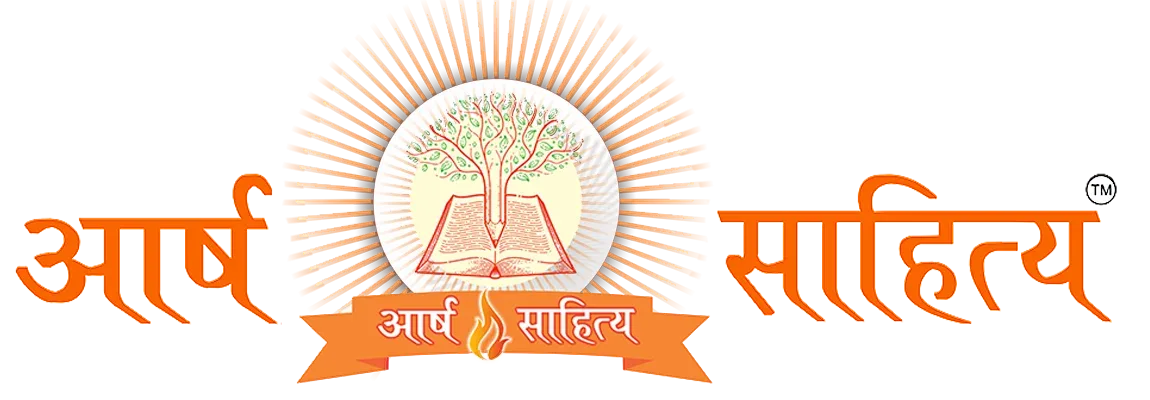

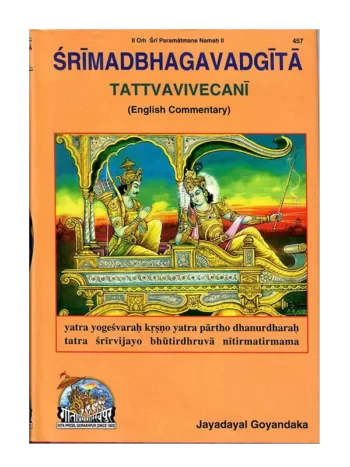
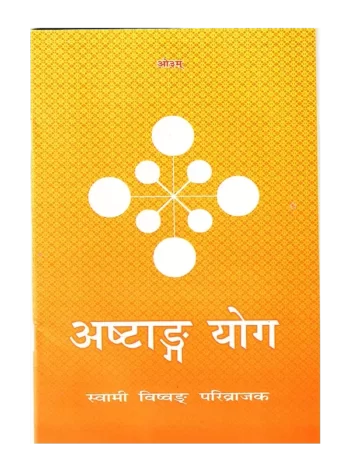
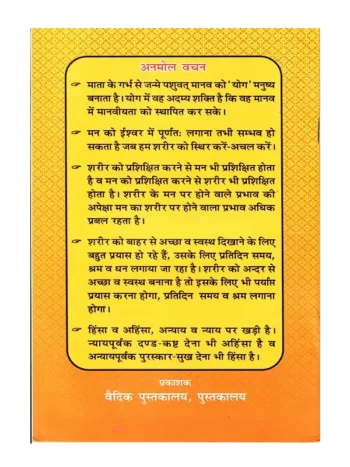

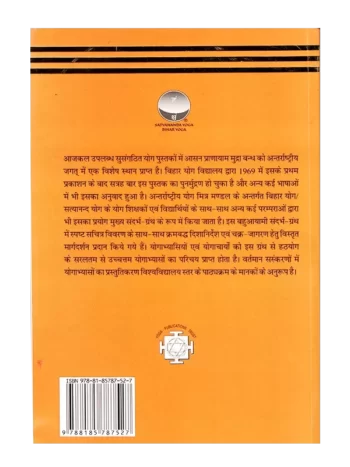

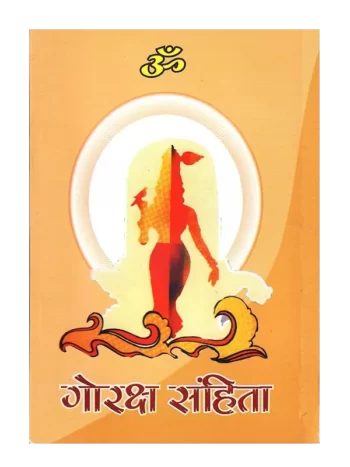
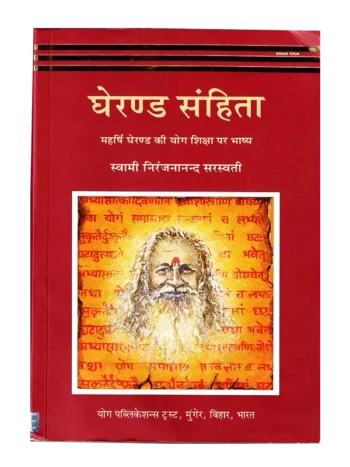
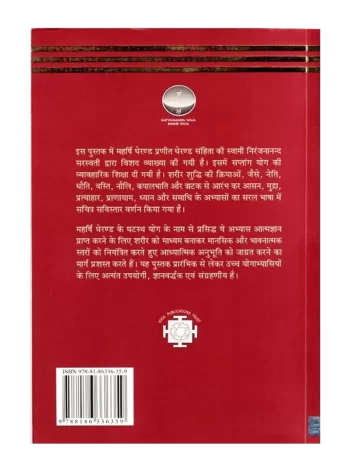



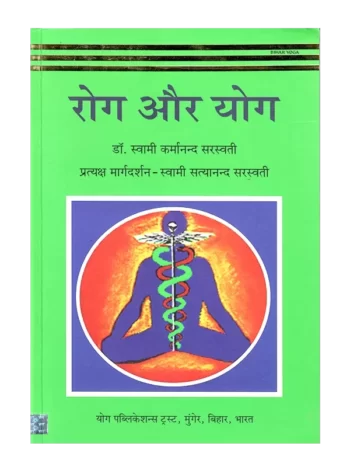
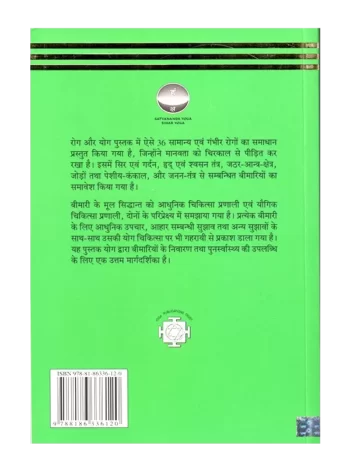

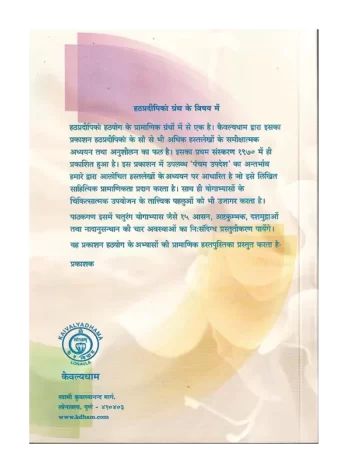
Reviews
There are no reviews yet.